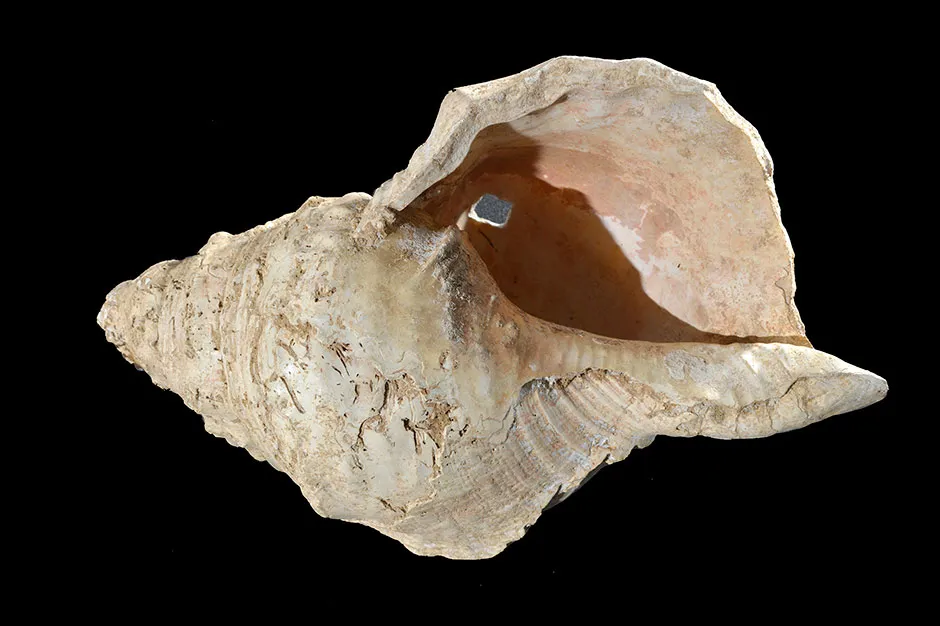For the first time in more than 17,000 years, three musical notes have reverberated from an ancient conch shell modified to serve as a wind instrument.
Archaeologists say the specimen is the oldest known human-made conch shell horn and stands out as a unique find among European Upper Palaeolithic (around 46,000 to 12,000 years ago) artefacts.

First found in 1931 in the cave of Marsoulas, nestled in the foothills of the French Pyrenees, the discoverers initially thought the shell served as a ceremonial drinking cup and noted no discernible modifications by human hands.
But after looking at the shell with fresh eyes – and advanced imaging techniques – Carole Fritz at the French National Centre for Scientific Research and colleagues determined that the occupants of the cave had carefully modified the shell to install a mouthpiece.
These ancient craftspeople also removed the outermost edges of the shell’s labrum, the flared ridge that extends outward from the shell’s main opening, and adorned the exterior of the shell with ochre-red pigment designs that match the style of wall art found inside Marsoulas cave.
Read more about music:
- The science of why sea shanties are so catchy
- Human brains naturally tuned to hear music
- Bronze Age musical instruments made from human bone
The tip of the shell is broken, forming a 3.5cm diameter opening, according to the study published in Science Advances.The researchers say the break is clearly not accidental as this is the hardest part of the shell.
At the opposite end, the shell opening shows traces of retouching (cutting) and a scan has revealed that one of the first coils is perforated.The red pigment used on the shell indicates its status as a symbolic object.
To confirm the hypothesis that this conch was used to produce sounds, scientists enlisted the help of a horn player who managed to produce three sounds close to the notes C, C sharp, and D.
The researchers assume a mouthpiece was also attached to the conch horn because its opening was irregular and covered with an organic coating, as is the case for more recent conches.
“Around the world, conch shells have served as musical instruments, calling or signalling devices, and sacred or magic objects depending on the cultures," the authors write.
“To our knowledge, the Marsoulas shell is unique in the prehistoric context, however, not only in France but at the scale of Palaeolithic Europe and perhaps the world.”
Carbon-dating of the cave, carried out on a piece of charcoal and a fragment of bear bone from the same archaeological level as the shell, suggested the conch is around 18,000 years old.Researchers suggest this makes the Marsoulas conch the oldest wind instrument of its type.
To date, only flutes have been discovered in earlier European Upper Palaeolithic contexts. The conches found outside Europe are much more recent.
Reader Q&A: When did humans first make music?
Asked by: Margaret Hutt, Amersham
The oldest discovered musical instruments in the world (flutes made of bones and mammoth ivory) are over 40,000 years old. But instruments and song may be far, far older. In his book The Descent Of Man, Charles Darwin wondered whether our language abilities had started with singing, and if that was the reason for our pleasure in music.
By studying fossils, we can establish that once our ancestors had the horseshoe-shaped hyoid bone in the throat in a similar position to modern humans, they would have had the physical ability to sing as we can. That date is over 530,000 years ago.
Read more: